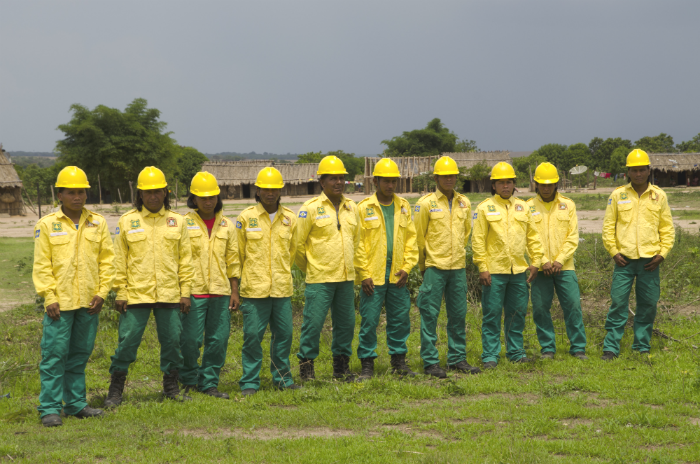
Brazil is home to 30 percent of the world’s tropical rainforests, including 60 percent of the Amazon, the largest and most biodiverse tropical rainforest in the world. A shared priority for both the GOB and USG is to strengthen biodiversity conservation in the Brazilian Amazon and its protected areas system, including indigenous lands.
Under USAID/Brazil’s current biodiversity conservation program, which forms a significant part of the USG-GOB strategic partnership, USAID works in close partnership with the GOB through a Development Objective Grant Agreement (DOAG), signed in August 2014. This strategic program provides targeted technical expertise, training, research, and improved technologies and approaches in support of Brazil’s environment goals. USAID also works with the Government to partner with civil society organizations and the private sector to promote sustainable value chain development, enhancing local livelihoods while simultaneously improving natural resource management, thus meeting Brazil’s conservation and development goals.
Brazil has several types of protected areas; each with its own unique regulatory framework and administration. Currently, the joint program includes indigenous lands, national forests, national parks, and extractive reserves (which allow sustainably managed timber and non-timber products to be utilized by local communities), as well as state and municipal parks and reserves. Indigenous lands are considered protected areas, and include activities that facilitate Indigenous People’s capacity and rights to directly manage their biologically diverse resources, while also improving their livelihoods.
USAID is currently working in the South of Amazonas, the Tapajós region, Acre and Rondônia states. These priority regions are natural mosaics of protected areas and were defined jointly with the GOB, based on several criteria, including a vast natural resource base, high levels of biodiversity, and the presence and level of organization of local communities and indigenous peoples in the area.
USAID provides technical assistance through the United States Forest Service to the Instituto Chico Mendes para a Conservação da Biodiversidade (ICMBio), the government body charged with managing Brazil’s protected area system through a system of “Conservation Units.” The program builds long-term capabilities of local partners and communities, as well, to improve conservation practices that incorporate improved science, technology and innovative approaches. Key objectives are the development of public use models for national parks; identification and development of sustainable value chains of timber and non-timber forest products; the design and streamlining of area management plans, and training and management of forest fires and other threats.
USAID also works jointly with the Fundação Nacional do Índio, FUNAI, the government body that manages Brazil’s indigenous lands, to provide technical assistance to implement Territorial and Environmental Management Plans (PGTAs). PGTAs are keystone to the National Policy for Land and Environment Management in Indigenous Lands (PNGATI), whose aim is ensure the protection and conservation of both natural and cultural resources within Indigenous Lands that improve the well-being of present and future generations of Indigenous Peoples. Such plans are dynamic instruments used to increase the value of indigenous assets (e.g. their natural resources, biological diversity, cultural heritage, etc.) and restore, recover, and/or better manage their lands. PGTAs also provide guidance for public policies and internal and external agreements. They facilitate open dialogue with the Government and foster partnerships and institutional arrangements that contribute to the development and sustainability of Indigenous lands and peoples. Ensuring their implementation is critical to biodiversity conservation and Indigenous People’s management and rights.
In addition, USAID facilitates inclusive science and research applied to Amazon biodiversity conservation as a cross-cutting objective. USAID supports activities such as new approaches to biodiversity monitoring in protected areas and learning platforms that enhance knowledge of the vast Amazon ecosystem and its processes. Advancing technologies for biodiversity conservation foster science-based management of protected areas and decision-making for policies to help Brazil manage its current and future conservation challenges.








Comment
Make a general inquiry or suggest an improvement.